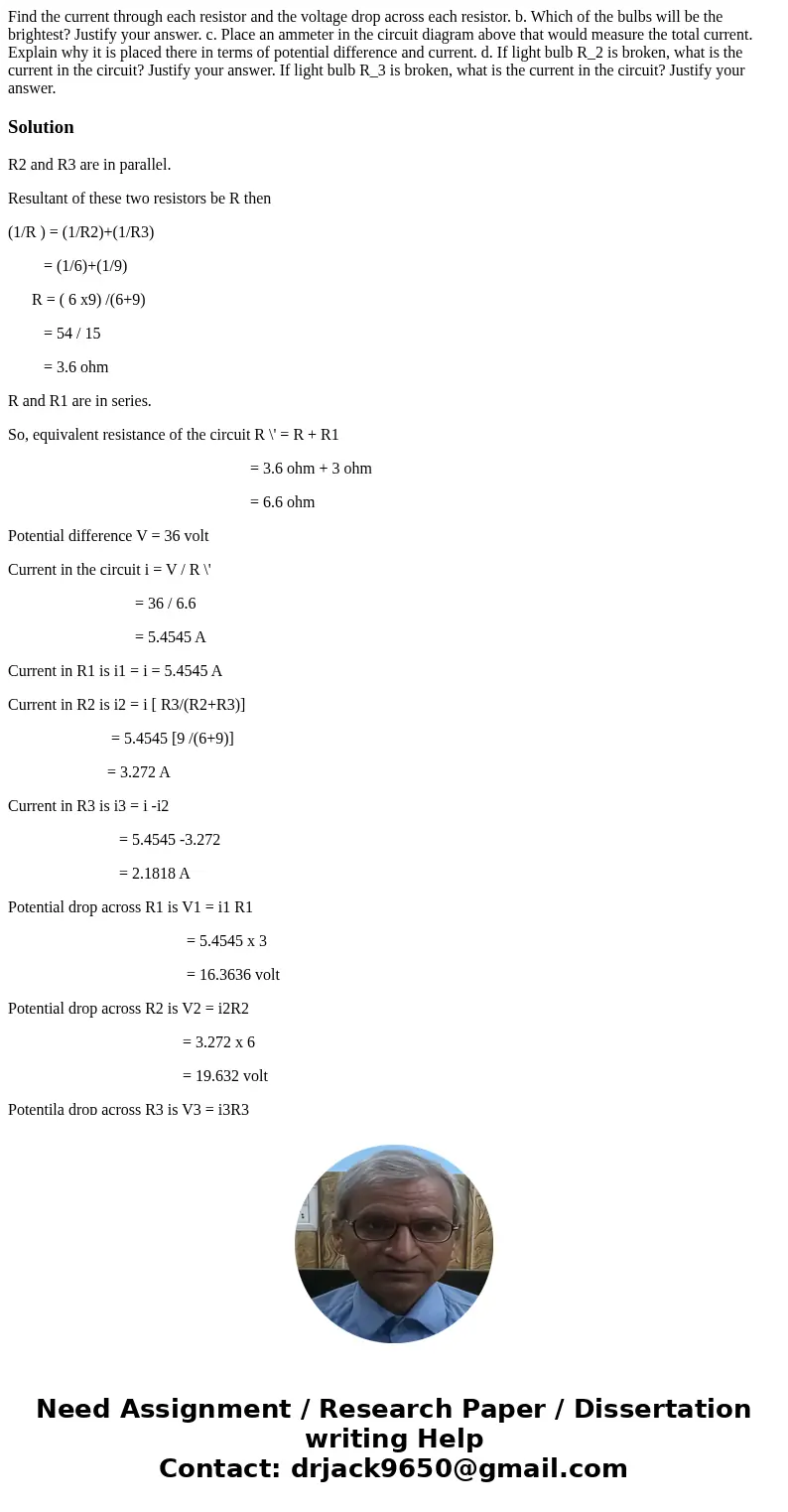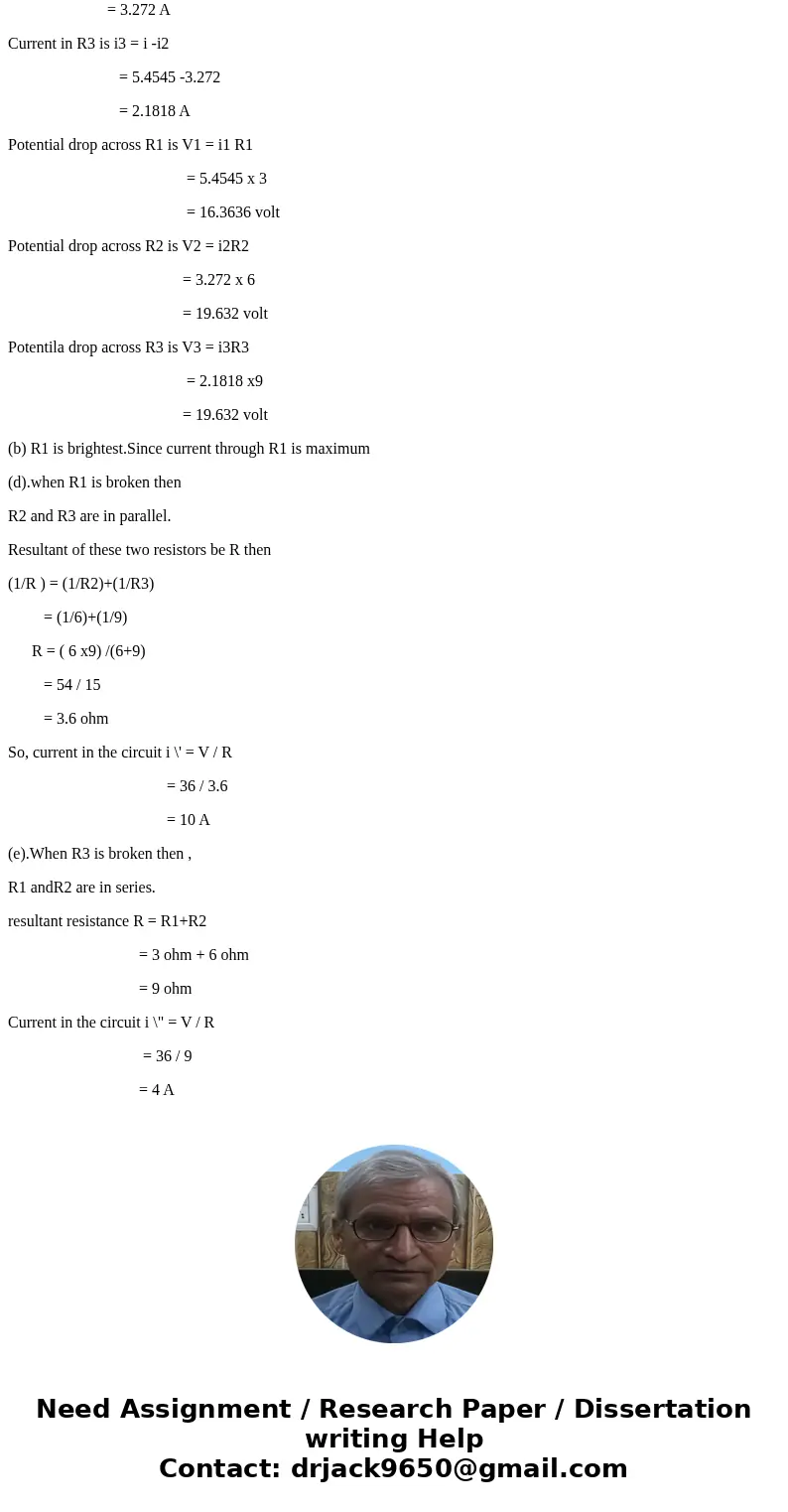Find the current through each resistor and the voltage drop
Solution
R2 and R3 are in parallel.
Resultant of these two resistors be R then
(1/R ) = (1/R2)+(1/R3)
= (1/6)+(1/9)
R = ( 6 x9) /(6+9)
= 54 / 15
= 3.6 ohm
R and R1 are in series.
So, equivalent resistance of the circuit R \' = R + R1
= 3.6 ohm + 3 ohm
= 6.6 ohm
Potential difference V = 36 volt
Current in the circuit i = V / R \'
= 36 / 6.6
= 5.4545 A
Current in R1 is i1 = i = 5.4545 A
Current in R2 is i2 = i [ R3/(R2+R3)]
= 5.4545 [9 /(6+9)]
= 3.272 A
Current in R3 is i3 = i -i2
= 5.4545 -3.272
= 2.1818 A
Potential drop across R1 is V1 = i1 R1
= 5.4545 x 3
= 16.3636 volt
Potential drop across R2 is V2 = i2R2
= 3.272 x 6
= 19.632 volt
Potentila drop across R3 is V3 = i3R3
= 2.1818 x9
= 19.632 volt
(b) R1 is brightest.Since current through R1 is maximum
(d).when R1 is broken then
R2 and R3 are in parallel.
Resultant of these two resistors be R then
(1/R ) = (1/R2)+(1/R3)
= (1/6)+(1/9)
R = ( 6 x9) /(6+9)
= 54 / 15
= 3.6 ohm
So, current in the circuit i \' = V / R
= 36 / 3.6
= 10 A
(e).When R3 is broken then ,
R1 andR2 are in series.
resultant resistance R = R1+R2
= 3 ohm + 6 ohm
= 9 ohm
Current in the circuit i \" = V / R
= 36 / 9
= 4 A


 Homework Sourse
Homework Sourse